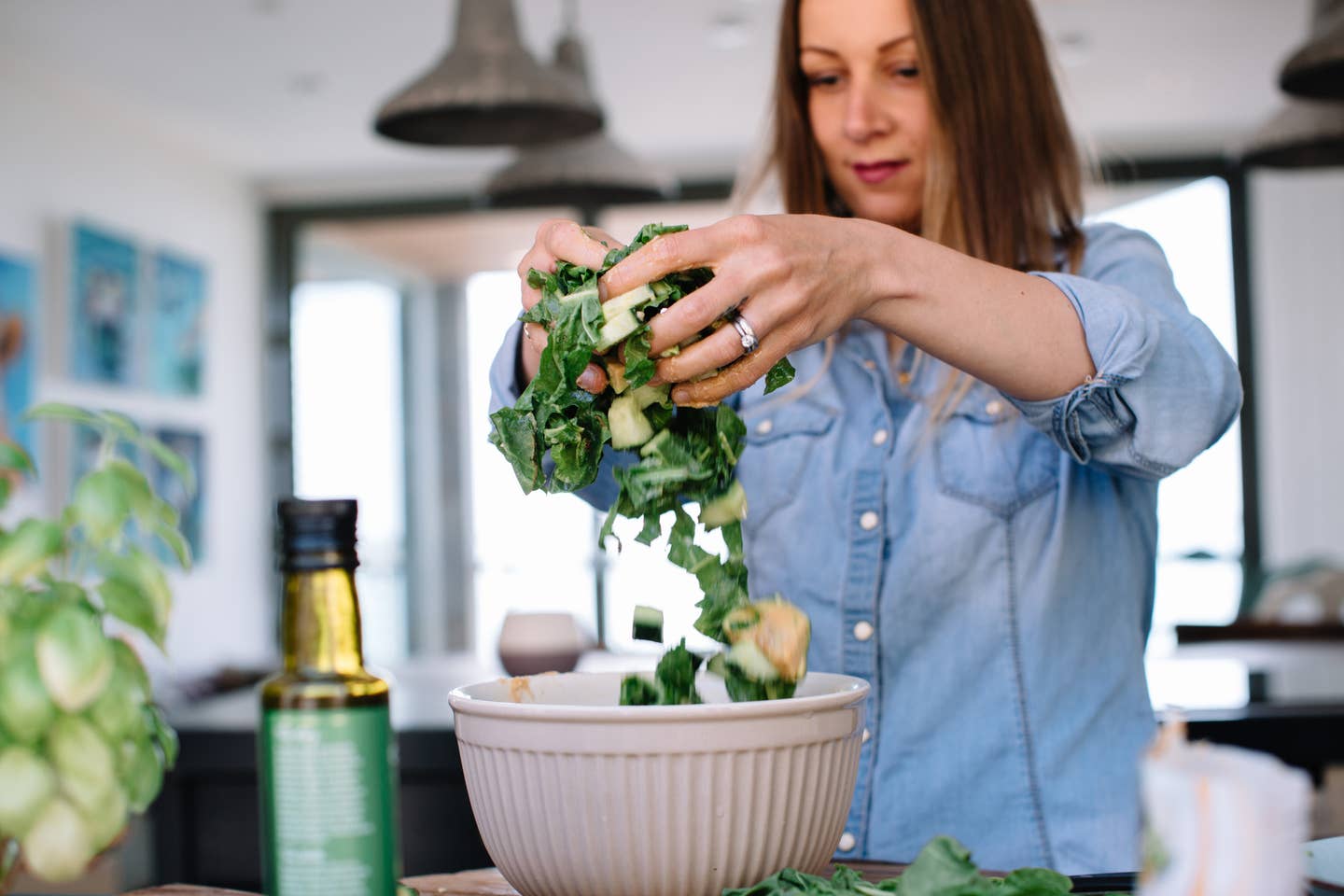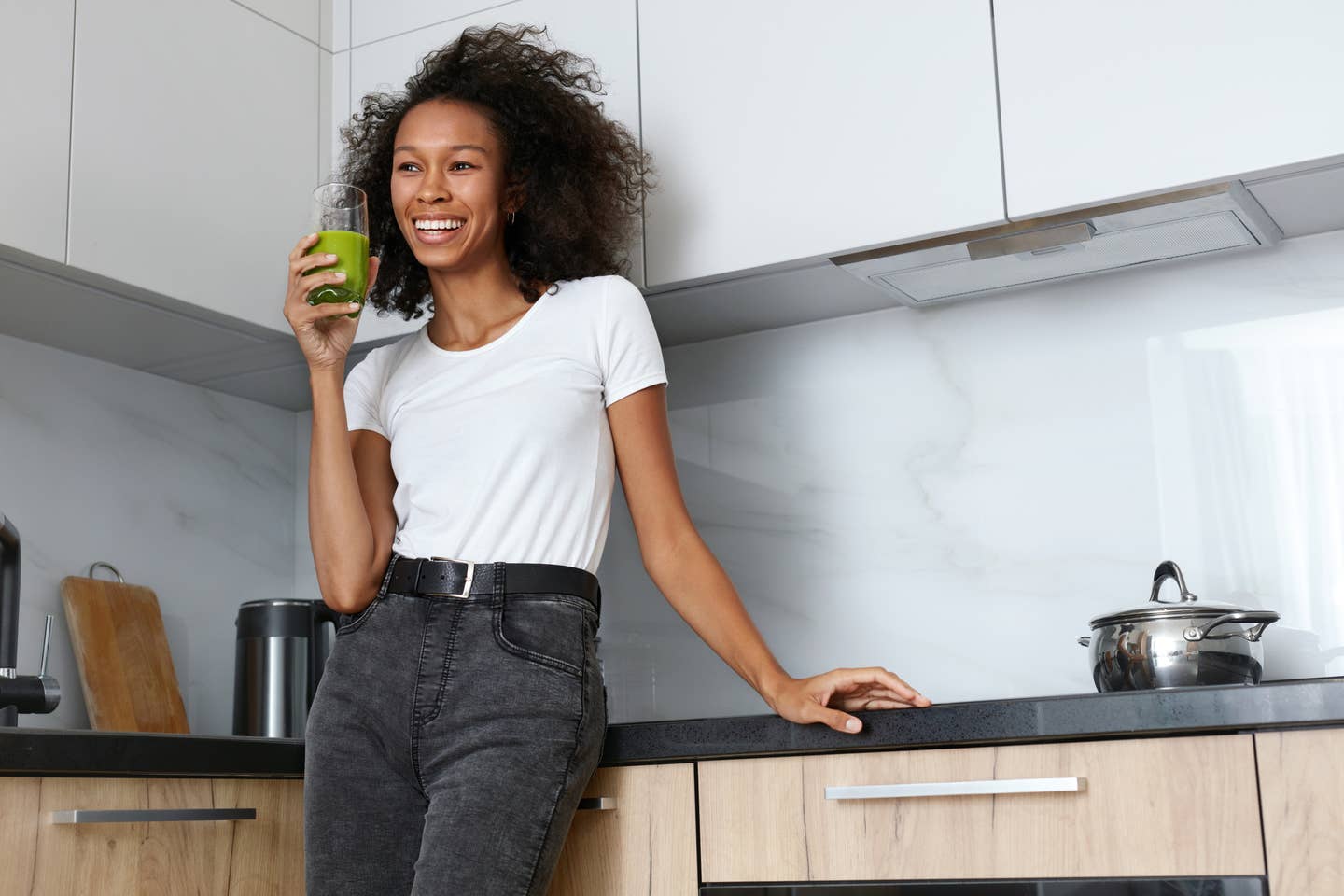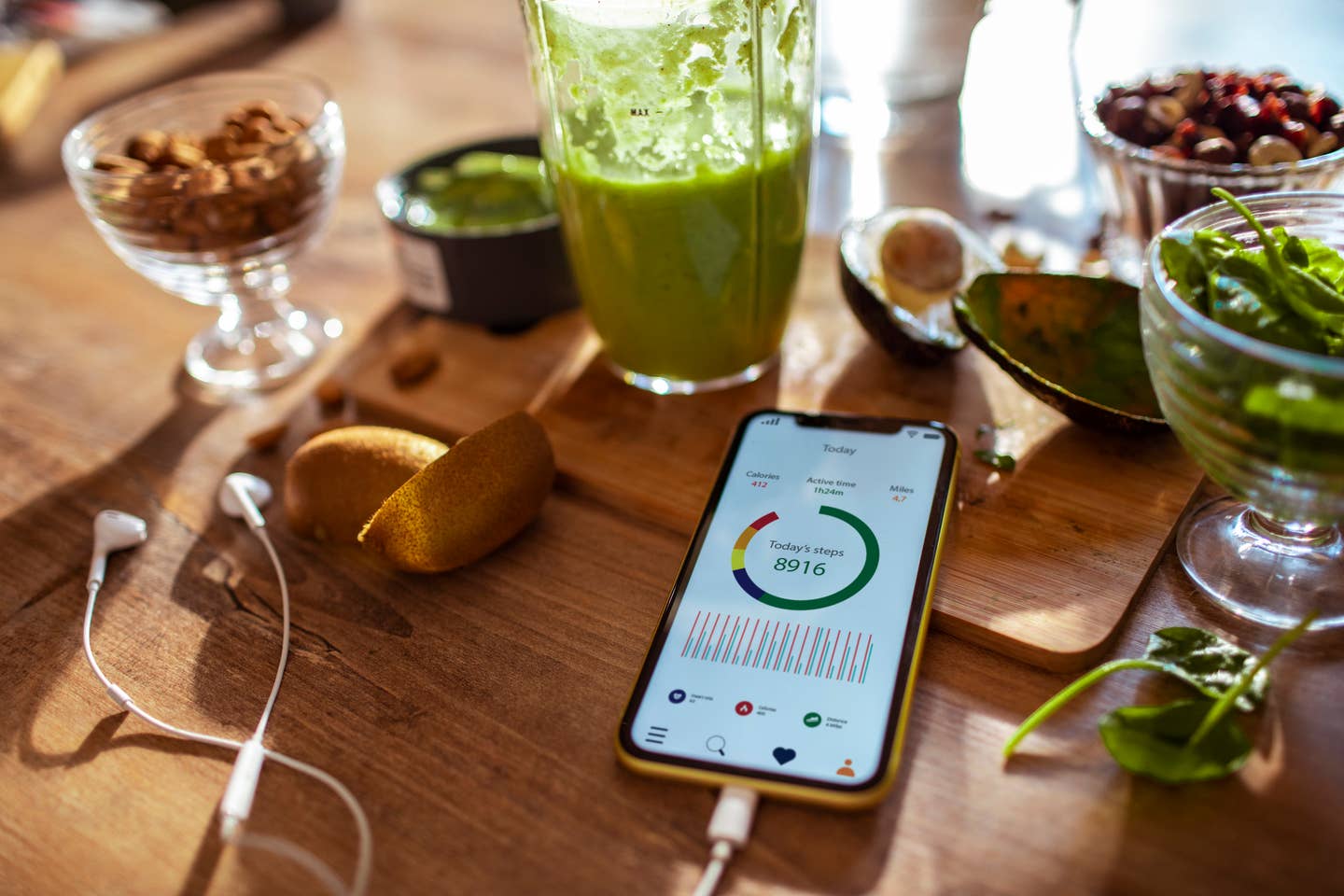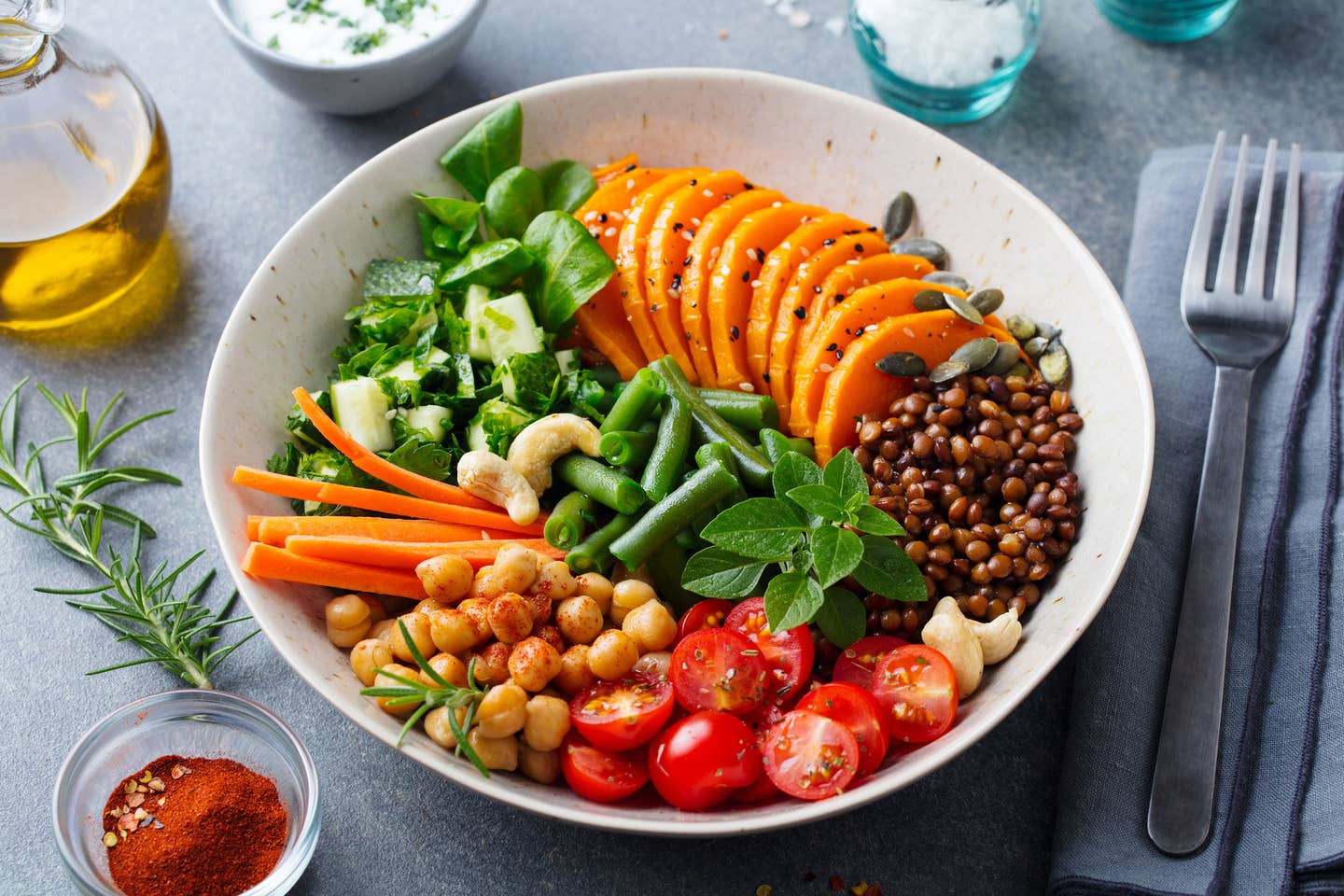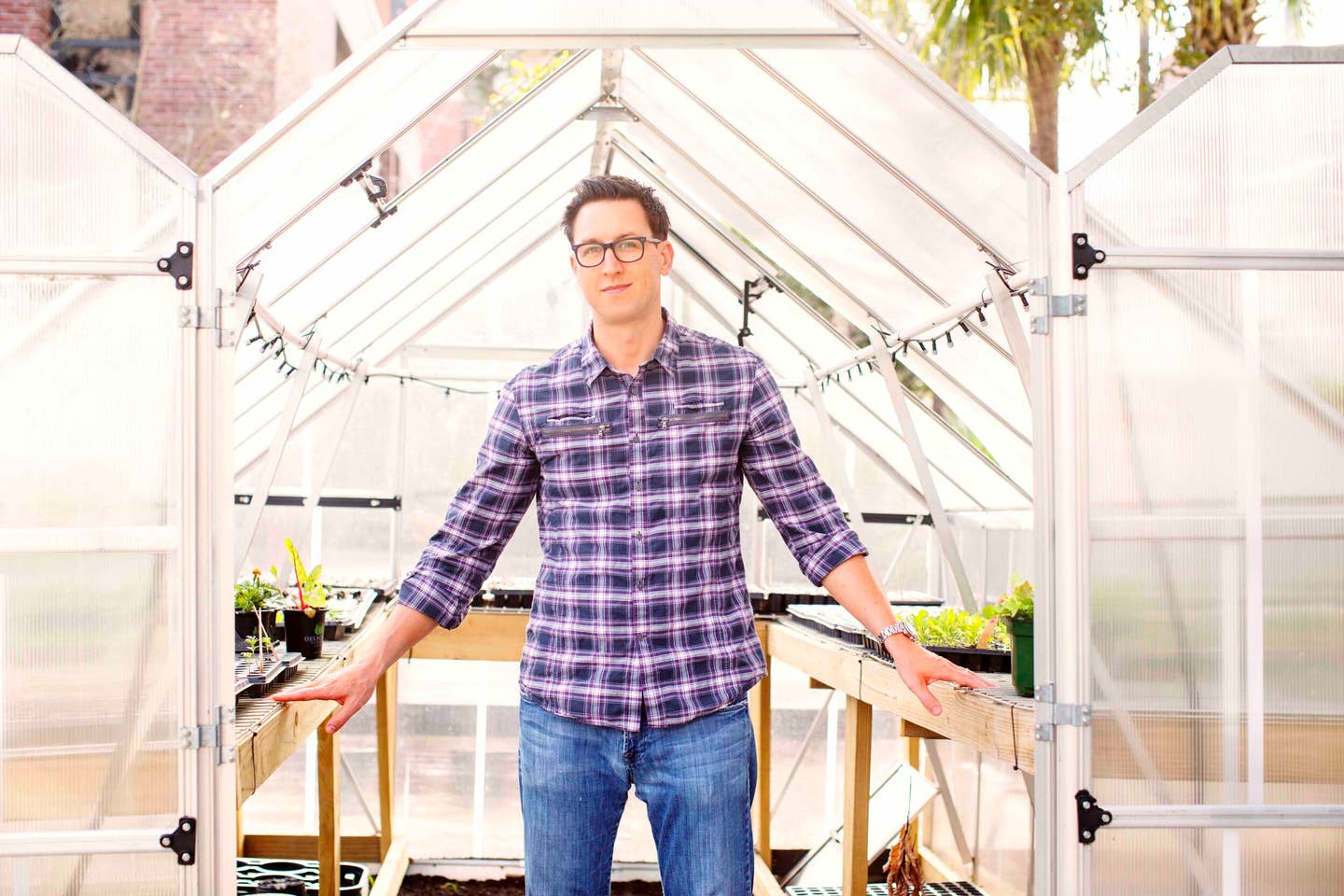
How a High-Fiber Diet Promotes Weight Loss, From a Doctor Who Lost 50 Lbs
Fiber isn't just for old people who need to be regular. The secret of fiber is that the more you add to your diet, the easier it is to lose weight, have more energy, and live a healthier life. That's the message from Dr. Will Bulsiewicz, who as a young resident had gained weight and was feeling depressed. He then met a new girlfriend who was eating plant-based and decided to try it.
On this new high-fiber diet, weight loss came naturally. Within a few days, his skin cleared up, his energy returned, and within a few weeks, the extra pounds melted away. He eventually realized that fiber was the key to losing weight so effortlessly. He lost a total of 50 pounds and never looked back. He started to research the connection between dietary fiber and weight loss, as well as fiber and energy, fiber and depression, and fiber and heart health.
"In a randomized, controlled study, when people eat more fiber, it's been shown that they lose more weight," says Dr. Bulsiewicz, who recommends high-fiber diets to help his patients with everything from IBS to colitis to sustainable weight loss. His own weight loss started 10 years ago, and he researched how high-fiber diets work and the mechanism in the body that spurs natural weight loss on a high-fiber diet.
What resulted was a book, Fiber Fueled: The Plant-Based Gut Health Program for Losing Weight, Restoring Your Health, and Optimizing Your Microbiome, that became a runaway bestseller. Now living 50 pounds lighter, eating plant-based, happily married to his plant-based inspiration, and raising two plant-based children, Dr. B. (as he prefers to be called) has a new book out, The Fiber Fueled Cookbook, with over 100 recipes that make it easy to eat more fiber. He couldn't believe the world didn't know about fiber, and that fiber wasn't taught in medical school, even when he was specializing to become a gastroenterologist.
"By increasing dietary fiber, you reduce the likelihood of heart disease, heart attack, cancer, stroke, diabetes and help in healthy weight loss. Yet when we have this information, I thought, why is it not discussed publically," Dr. Bulsiewicz explained, as the reason for writing his fiber book. "Fiber is an equalizer, and always present in the many different paths to heart health."
Dr. Bulsiewicz breaks it down for us: The importance of fiber, how to get more of it, and why Americans are not taught to prioritize fiber but instead obsess over how much protein they eat (which is a mistake, he explains if the goal is a lean, strong, healthy body). Fiber is king, and his goal is to educate people about the best high-fiber foods to add to their diet, the easiest ways to get fiber, and how to get the right amount of fiber you need in a day.
It's possible to think of fiber for weight loss as a magic pill that everyone is seeking, yet hardly anyone is using. In the U.S., most people fall far short of the recommended amount of fiber per day. How much fiber per day should you eat? "For women, it's at least 25 grams and for men, it's 38 grams. Yet 19 out of 20 Americans are not just a little deficient in fiber but eat extremely low amounts," says Dr.Bulsiewicz.
What Is a High-Fiber Diet?
A high fiber diet is one that is rich in:
- Fruit
- Vegetables
- Whole grains
- Legumes
- Nuts and seeds
How Much Fiber Should You Eat Per Day?
- Women should eat at least 25 grams of fiber a day
- Men need 38 grams of fiber in a day
But those fiber amounts are minimums, provided by the USDA as goals for Americans to hit, something akin to 10,000 steps in a day, but more fiber is better, explains Dr.Bulsiewicz. Still, even those amounts are not being met by most Americans, who fall well short, he adds. Only one in 20 people achieve these minimums, he adds.
The easiest way to get more fiber into your diet is to aim to eat five servings of fruits and vegetables a day, something that 90 percent of Americans do not achieve on most days.
How Eating More Fiber Aids in Weight loss
Fiber helps your body burn fat and lose weight. To understand the role of fiber in aiding weight loss, first, you need to understand that your body itself isn't breaking down fiber, but instead, the trillions of healthy bacteria that live in your gut do this job. These bacteria make up what's called your gut microbiome, or environment, and many types of organisms live there, breaking down the food that comes into the system.
This microbiome helps drive up or down inflammation, regulates your immune system, and determines your energy levels throughout the day, as you eat different types of food. Added sugar, saturated fat, animal protein – and especially meat and dairy – feed unhelpful bacteria, that can increase your body's inflammation and lead to hardening of the arteries (which increases the risk of heart disease and type 2 diabetes in the long term). Meanwhile, the "good bacteria" in the gut feed on fruits, vegetables, legumes, whole grains, nuts, and seeds.
"The microbiome is healthiest when you feed the good bacteria fiber-filled foods – such as vegetables and fruit, legumes, whole grains, nuts, and seeds – which allows them to get stronger, break down more fiber, and help the body run better. The microbiome regulates everything from your immune system to inflammation. A fiber-filled diet is the most anti-inflammatory diet there is," explains Dr. Bulsiewicz.
Fiber helps in weight loss by slowing down fuel absorption into the body and bloodstream. As the hard-to-break-down fiber gets worked on, like untying a series of knots in a long knotted rope, the fuel is released over many minutes and even hours. That means you stay full longer and your body does not experience a sudden surge of blood sugar that it can't handle or burn off.
Since the blood can only contain about a tablespoon worth of sugar at any given moment, the extra has to be shunted off. Your insulin response is the messenger that tries to "sell" the extra fuel and when none of your muscles or organs can use it, the body stores it in its virtual warehouse: Fat cells.
So the slower your calories are sent into the system, i.e. absorbed into the bloodstream, the more likely you will burn them instead of storing them. "Fiber makes it so that you won't have an insulin response to the food you eat," says Dr. Bulsiewicz. The opposite of fiber is eating high-added sugar foods – like donuts – that get absorbed quickly, spiking blood sugar. Then insulin reacts and carries the extra calories you aren't using to be stored as fat.
"Fiber slows absorption, which means you have more energy for longer and you don't need to eat again so soon after," says Dr. Bulsiewicz. "Fiber lowers the insulin response."
Fiber and Metabolism
"Your Metabolism is like the engine of a car," explains Dr. Bulsiewicz. "You can slow the gas-burning by keeping the fuel steady, not revving the engine and then coasting, which is what happens when you eat sugar since your energy goes way up and then way down. Or, you can put your foot on the pedal steadily and go at an even speed, not revving and coasting, but at a nice, steady rate.
"That's what fiber does. It keeps your metabolism burning steadily for hours. Just think of this: After your sugar high, then you essentially are taking your foot off the gas pedal. A coasting car gets passed by a slow-rolling car – so even if it's going at 30 miles per hour that steadily moving car will run better and further," says Dr. B. You will lose weight by eating more fiber.
"Metabolism is like that," he explains. "Fiber is like cruise control, you just keep going and never run out of fuel or get hungry for more. You just keep burning it." And that is what helps you lose weight. You never run out of energy and don't need to keep eating again, shortly after your last meal or snack. Fiber keeps you fuller longer, which is key to weight loss.
As for the secret to having a fast metabolism, stop counting calories. They don't tell the whole story, says Dr. B. Instead, "I count plants," and the more the better. "You microbiota bacteria are not all the same. Some respond to an apple, others to kale, and still others to citrus. To have the fastest metabolism or the healthiest weight loss, you have to mix it up and eat different kinds of plants," he says.
High Fiber Foods to Add to Your Diet
There are so many great sources of fiber. Here are 10 high-fiber foods
1. Apples: 4 grams of fiber in one apple
2. Avocados: 10 grams of fiber in one cup of avocado
3. Beans: 9 grams of fiber in a half-cup serving of shelled edamame
4. Berries: Nearly 4 grams of fiber in one cup of blueberries
5. Broccoli: 5 grams of fiber per cup of cooked broccoli
6. Chia Seeds: There are 10 grams of fiber in one ounce of chia seeds
7. Dried Fruits: 12 grams of fiber in one cup of prunes, 9 grams in one cup of dried apricots
8. Popcorn: About 1 gram of fiber in one cup of popcorn
9. Potatoes: One small potato with skin can provide close to 3 grams of fiber
10. Nuts: There are 5 grams of fiber in a cup of ground walnuts, 3.5 in an ounce of almonds
There is also fiber in whole grains, such as 4 grams in a cup of oatmeal. Look for over 4 grams of fiber on your whole wheat bread and check the labels of whole-wheat pasta, brown rice, and cereals. Look for 100 percent whole grains as the first ingredient on the label.
What to Eat in a Day
Dr. Bulsiewicz shares what he eats in a day. Here are easy ways to get fiber into your diet:
Breakfast: Avocado Toast with Sauerkraut
It's easiest to make avocado toast. I use sourdough bread (which is high in fiber) and ripe avocado, and you can add toppings, such as chia seeds or chickpeas. I like a splash of vinegar and Sauerkraut (because it's fermented it is super healthy for your gut and has 4 grams of fiber per cup). If you don't have avocado on hand, make it with hummus or just have peanut butter and cinnamon on toast. People forget that peanut butter is made of plants
Lunch: Soup or Salad or a Banh Mi Sandwich
When you eat a vegetable soup or big salad full of greens, beans, peppers, onions, or other high fiber foods you set yourself up to not have that afternoon energy dip you may be used to. Even if you prefer to have a sandwich, try something like a Banh Mi sandwich which is a French and Vietnamese style sandwich full of tofu, pickled carrots, cilantro, and any other greens you want to add to it. The picked carrots are also fermented, so that is great for you.
Dinner: There are 125 Recipes in The Fiber Fueled Cookbook!
I am a fan of healthy foods because they make me feel better. The healthiest diets in the world are those in the so-called Blue Zones identified by Dan Buettner as the regions with the highest density of people living 100 years or longer, and living healthily. That means legumes, whole grains, and when I go to make dinner, I think: Let's use that! So I'll make a mango burrito bowl, full of farro or another healthy whole grain. But make it your own. Add vegetables and quinoa and anything you like.
We are raising our first two kids plant-based, and our son is 5 and the size of an 8-year-old. Of course, my wife and I are both tall, but he is like a bean sprout! And he has never had a burger in his life.
The other thing to make any night is a pasta sauce and use whole wheat pasta. There are ways to do it without tomatoes since a large part of the population is sensitive to them. Some people need to follow a low-FODMAP diet and there are ways to make these recipes adaptive for them.
What is the best way to go plant-based?
"My advice for anyone who wants to eat a high fiber diet and go plant-based is that you can do it gradually. For me, it was an evolution. Ten years ago I was 50 pounds overweight with high blood pressure, and high cholesterol, and I was very depressed. I had all this graining at Georgetown and Northwestern and a GI Fellowships and yet no one taught me about this way of eating.
"I met my wife and she was eating plant-based and we went out to dinner – and here this person was thriving and loved the food she was eating. So I researched it and decided to try it. But as a doctor, I had zero time and needed "fast food." But instead of fast food for dinner, I started to make myself a smoothie at night. Your blender is a great fast food tool. I instantly felt more energized. My body found something that I had been missing: Fiber. Overnight my skin changed, and over the months my weight changed and I doubled down and then tripled and quadrupled down and ate more plant-based.
"I thought, this is so powerful I started voraciously consuming research into high fiber diets and then started using it in my practice. I witnessed people having radical transformations. Their IBS reversed, and their colitis went into remission. This became my story. I wrote it and sold over 200,000 copies of the book. I constantly feel like I am, holding a secret in my hand and want to help other people have it too.
Bottom Line: High fiber diets work for weight loss and overall wellbeing
To start eating more fiber-filled foods, simply add more vegetables and fruits to your daily diet and aim to get at least 25 grams of fiber a day if you are a woman or 38 grams of fiber a day if you are a man. It will help regulate your immune system, lower inflammation and make it easier to lose weight and keep it off.
For more great expert advice, visit The Beet's Health & Nutrition articles.
More From The Beet

